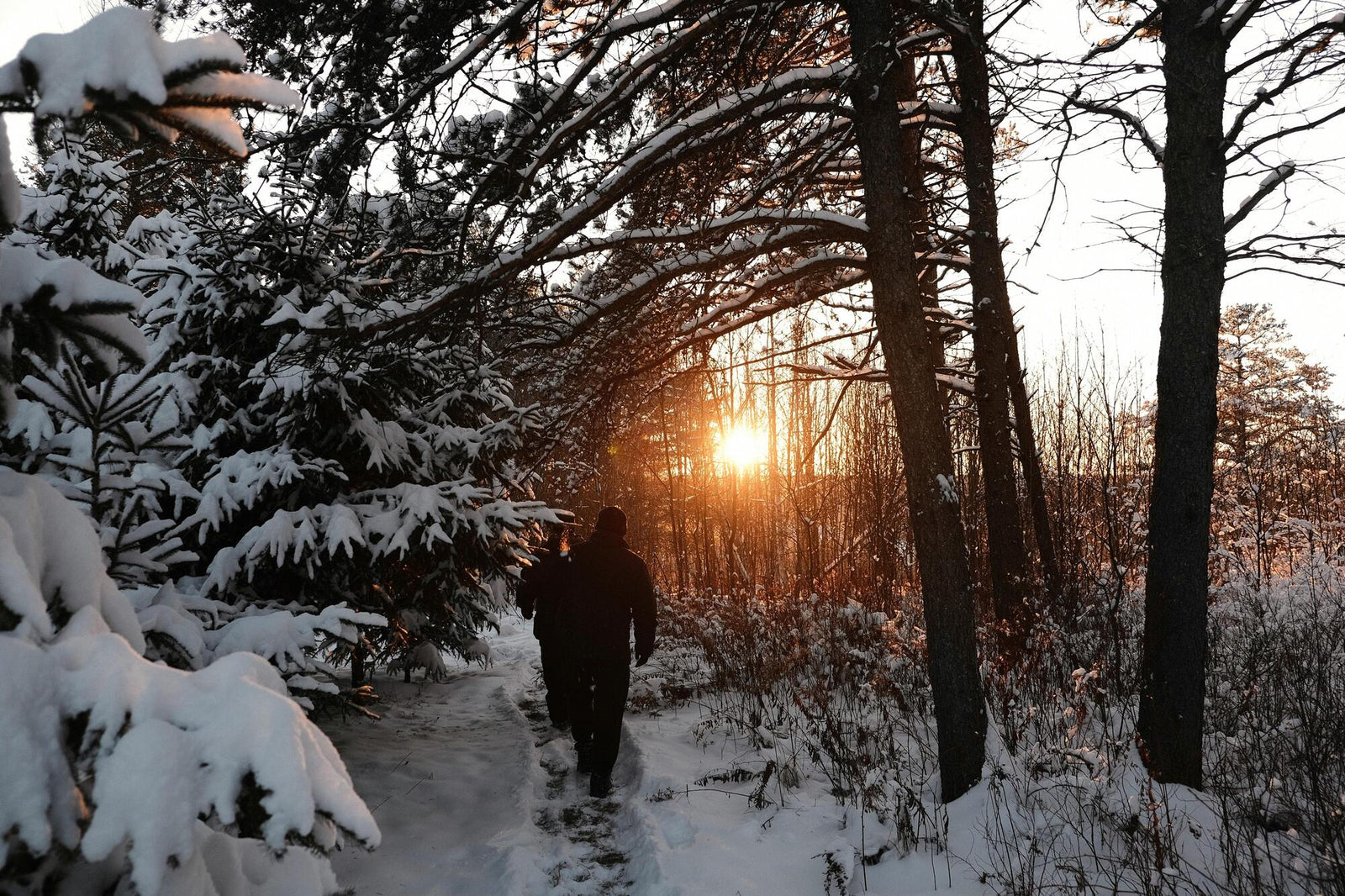Your Cart is Empty

January 13, 2025 8 min read
Take our quiz and find which supplements your body is craving.

Written by Chris Bellanger, BHSc in Nutritional Medicine
Imagine a workout that not only makes you healthier and happier but also benefits the planet. Now imagine a gym with no walls, ceilings, or membership fees—a place where the horizon is your limit, and fresh air is your training partner.
Welcome to the world of green workouts—a refreshing and eco-friendly approach to fitness that encourages outdoor exercise and sustainable practices.
While modern life often pulls us toward indoor routines, new insights beckon us outside, offering not just fresh air but a host of health perks tied to what experts call "green exercise."
In this extensive guide, we will explore the benefits, ideas, and inspirations for incorporating green workouts into your lifestyle, whether you're living in a bustling city or the serene countryside. We’ll also share some practical tips to help you make the most of what nature and your environment have to offer.
Throughout history, humans have shared an intimate bond with nature, not just relying on it for survival, but also for healing and peace of mind. Our ancestors roamed forests and fields, honing a profound connection with the natural world. Fast-forward to today, urbanization engulfs our landscapes and severs this connection. This disconnection, unfortunately, contributes to a range of modern ailments, from mental health issues to sedentary lifestyle diseases.
However, the allure of green spaces remains potent, and most of us yearn for a connection with nature, dreaming of that off-grid home or tropical island retreat where we can live in a treehouse.
While we might not have access to those options, most of us have access to nature, and it's often very close at hand. Parks, gardens, and backyard retreats aren't just nice-to-have amenities; they are vital sanctuaries offering mental and physical rejuvenation. But what exactly happens when we engage with nature?

When we indulge in activities outdoors, nature offers a dual benefit—boosting both mind and body. As researchers reveal, those who exercise in lush, green settings enjoy enhanced mental well-being such as reduced stress, and visible physical health advantages, including improved vitamin D levels shown to have significant health benefits, and better sleep cycles thanks to natural light exposure during the day.
Spending time in nature is akin to giving your brain a refreshing cold splash. Nature's influence on mental wellness is both significant and profound. Just five minutes of exposure can lower feelings of anger, enhance mood, and improve self-esteem. This rapid psychological uplift is thought to stem from our evolutionary history of dwelling in nature-rich environments, which fosters a deep-seated affinity for green spaces, known as biophilia.
Moreover, nature provides what urban spaces lack—restorative qualities that allow our overtaxed brains to recover from mental fatigue. The term "Attention Restoration Theory" suggests that natural environments engage the mind effortlessly, offering a refuge from the concentrated focus required in urban settings. This mental refuge can nurture creativity, improve concentration, and foster a general sense of well-being that keeps you engaged and motivated for the rest of the day.
The physiological benefits of green exercise are just as compelling. Exercising in nature has been associated with a reduction in blood pressure, heart rate, and stress-related hormones. This physical response is part of what the Japanese refer to as Shinrin-yoku, or "forest bathing," which emphasizes the health benefits derived from spending time in natural settings.
This state of relaxation in green environments is thought to result from lowered sympathetic nervous system activity, the body's stress-flight mechanism, which promotes overall cardiovascular health. Furthermore, just being in nature has been linked to boosts in immune function, marked by increased activity of natural killer cells—our body's frontline defenders against illness.
Moreover, engaging with the natural environment while working out often leads to increased levels of physical activity, as you're more likely to extend your exercise session when it feels less like a chore and more like an adventure.
Motivation, the driving force behind exercise, can be as complex as a forest’s ecosystem. Nature offers intrinsic motivation through its inherent beauty and tranquility. It provides social settings perfectly aligned with today’s health trends, promoting fitness that incorporates social interaction and elevated enjoyment levels.
Interestingly, when people take their workouts to trails rather than treadmills, a fascinating phenomenon occurs: exercises appear less effortful and more enjoyable. This may be attributed to the distraction that natural environments offer, compared to monotonous gym surroundings. They report reduced perceived exertion, which in turn encourages longer, more vigorous workouts—a win-win for fitness enthusiasts aiming for better health outcomes.
A worrying shift in today’s societies sees screen time replacing green time, especially in children. This rising trend, coined "Nature Deficit Disorder," is linked to increased health issues, ranging from obesity to anxiety and depression.Reintroducing the younger generation to nature could unravel this cycle, fostering not only physical well-being but also inculcating a lifelong love and respect for the environment.
Parental concerns about safety often restrict children from exploring natural spaces. However, studies show that early exposure to nature engenders deep-seated emotional connections that promote healthier lifestyle choices and attitudes toward the environment in adulthood.

City life offers a unique canvas for creative, eco-friendly workouts. With a little imagination, you can transform everyday locations and objects into an exhaustive fitness routine without the constraints—or the carbon footprint—of a gym. Consider these urban exercise ideas:
Practicing yoga in the serene environment of a park not only allows you to connect with nature but also to find inner peace within a community setting. As participants lay down their mats on a grassy patch, the natural ambiance creates an immersive sensory experience that enhances the meditative quality of yoga.
The grounding effect of touching the earth, the sound of chirping birds, and the gentle rustling leaves cultivate a greater sense of presence and mindfulness. Group sessions also offer a sense of belonging and shared tranquility.
Climb those museum stairs more than once! Cities are filled with opportunities for stair climbing. Whether you're scaling the steps of a skyscraper or simply using public staircases, stair climbing is an intense cardiovascular workout that targets your glutes, thighs, and calves. It increases your heart rate, burns calories efficiently, and helps build lower body strength. Plus, every ascent rewards you with stunning cityscapes as your backdrop, making your workout doubly rewarding.
Fun fact: Stair climbing burns more calories per minute than jogging and gets your heart pumping faster than walking on flat ground. Next time a meeting is on the 18th floor, think twice before taking the elevator.
Parks provide an excellent setting for circuit training. Equipment like park benches can serve as props for exercises like squats, lunges, or tricep dips. Monkey bars aren't just for kids; they offer an opportunity for pull-ups and hanging leg raises.
Create your own circuit using a mix of bodyweight exercises—push-ups, planks, or burpees—with spurts of running or brisk walking between stations. This type of workout is versatile, scalable to different fitness levels, and a fantastic way to engage with your local community.
Team sports are fantastic for bringing people together in outdoor settings. These activities aren't just about physical exercise—they offer numerous social and emotional benefits, without the need for excessive competition.
Known for its spirited play, ultimate frisbee combines agility, coordination, and speed. It's a welcoming sport for all ages and fitness levels, with a strong emphasis on sportsmanship and self-officiating.
Whether played on grass or sand, volleyball is a game of teamwork and communication. It encourages players to coordinate and strategize, strengthening group dynamics and interpersonal relationships.
Mixing public transport with a workout routine is a smart way to carve out exercise time in busy schedules while minimizing your carbon footprint. How about riding a few stops short of your destination and walking or jogging the rest of the way? You could also bring a collapsible bicycle onboard to continue pedaling from the stop.
Cycling is gaining momentum as an effective green workout for city dwellers. Whether you're commuting to work, heading to the grocery store, or exploring the city, cycling offers a full-body workout that strengthens your heart, lungs, and muscles while being gentle on your joints.
Try joining a local cycling club or participating in city-organized cycling events to meet fellow cyclists and enjoy a camaraderie that transcends vehicular traffic.

Living in the countryside offers vast open spaces and unparalleled access to nature's bounty. Here are some rural workout ideas that require little to no equipment:
Trail running is an exhilarating way to experience the great outdoors while improving your cardiovascular fitness. Uneven terrains engage stabilizing muscles, improve balance, and elevate endurance and strength. Many rural areas offer designated trails that can expose you to varying terrains, and the chance to enjoy flora, fauna, and breathtaking vistas.
Visualize yourself on a lush forest trail, where each step, crunching softly on the path with pine needles and earth, brings you a little closer to an elusive, serene destination—a reflection of your inner journey toward health and vitality.
Whether you're tackling hilly paths or coasting along peaceful country lanes, cycling offers a robust cardiovascular workout combined with a sense of adventure. Rural roads are often less crowded than the city.
It’s increasingly clear: nature is more than a backdrop for life’s experiences. It plays an active role in our quest for holistic health and wellness. Hence, amidst the hustle and bustle of urban living, engaging with nature is not just beneficial—it’s essential.
Communities and policymakers should prioritize developing and maintaining green spaces that are safe, accessible, and inviting for all. Access to these spaces can encourage greater interaction with nature, contributing to both individual well-being and collective environmental consciousness.
By embedding nature into urban planning, we create sustainable cities that not only help to address environmental issues such as electricity overconsumption but provide us with tangible health benefits to boot.
Find out more about Amandean’s sustainability journey and how shopping our natural products supports a green cause!
Gladwell, V. F., Brown, D. K., Wood, C., Sandercock, G. R., & Barton, J. L. (2013). The great outdoors: how a green exercise environment can benefit all. Extreme Physiology & Medicine, 2(1). https://doi.org/10.1186/2046-7648-2-3
Holly Tiret, Michigan State University Extension. (2024, February 14). Green exercise can improve physical and mental health. Chronic Disease. https://www.canr.msu.edu/news/green_exercise_can_improve_physical_and_mental_health
Lahart, I., Darcy, P., Gidlow, C., & Calogiuri, G. (2019). The Effects of Green Exercise on Physical and Mental Wellbeing: A Systematic Review. International Journal of Environmental Research and Public Health, 16(8), 1352. https://doi.org/10.3390/ijerph16081352
Gladwell, V. F., Brown, D. K., Wood, C., Sandercock, G. R., & Barton, J. L. (2013b). The great outdoors: how a green exercise environment can benefit all. Extreme Physiology & Medicine, 2(1). https://doi.org/10.1186/2046-7648-2-3
Laezza, L., De Dominicis, S., & Brondino, M. (2024). Reassessing green exercise research: unveiling methodological gaps and pathways for progress. Frontiers in Sports and Active Living, 6. https://doi.org/10.3389/fspor.2024.1449059
How we started the green exercise revolution | University of Essex. (n.d.). https://www.essex.ac.uk/research/showcase/how-we-started-the-green-exercise-revolution

March 20, 2025 8 min read
Discover the benefits of creatine for women with Amandean’s Creatine HCI. Improve strength, energy, recovery, and cognitive function with this high-absorption formula. Its advanced HCl form ensures easy digestion and no bloating, providing all the benefits without the drawbacks. Elevate your fitness journey and overall wellness with a supplement designed for women’s unique needs.

March 03, 2025 7 min read
Discover how Bryan Johnson, a tech entrepreneur turned biohacker, uses cutting-edge science and personalized genetic testing to revolutionize health and longevity. Learn how biohacking, from diet to mental health practices, can help you live longer and healthier, with practical strategies to optimize your well-being. Find out more about genetic testing, and ways to implement results into your wellness routine.

February 19, 2025 6 min read
Explore the remarkable health benefits of medicinal mushrooms like Lion’s Mane, Turkey Tail, Chaga, and Reishi. These superplants support immune function, reduce inflammation, and boost brain health. Learn about Amandean's Brain Health supplement, combining Lion’s Mane, Magtein, and Alpha-GPC for optimal cognitive performance.